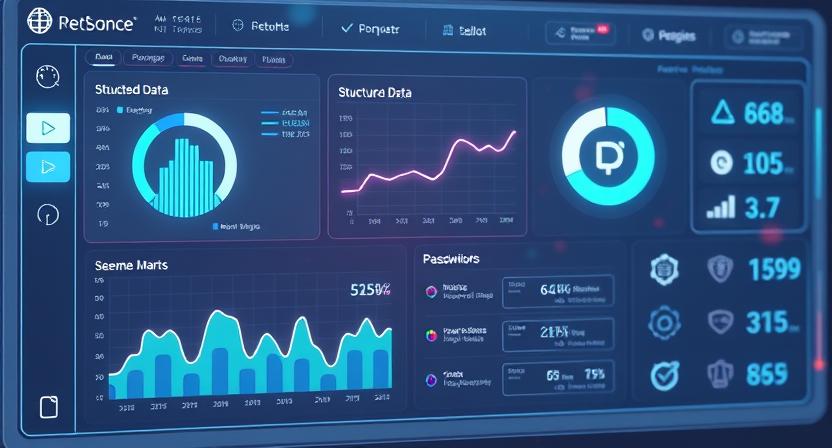GEO Is Evolving—Affordably and Intelligently
In today’s hyper-AI-driven digital ecosystem, Generative Engine Optimization (GEO) is no longer a luxury—it’s a necessity. But as more businesses realize the need to optimize their content for AI engines like ChatGPT, Google Gemini, and Claude, a big question arises:
“Can I implement GEO without breaking the bank?”
The answer is: Yes.
With the right tools, strategies, and real-time analytics, affordable generative engine optimization solutions are within reach—even for startups and solo creators. This blog will show you how to optimize your AI presence intelligently, cost-effectively, and measurably.
What is Generative Engine Optimization (GEO)?

Generative Engine Optimization is the process of tailoring your content so it’s discoverable, usable, and cite-worthy by generative AI systems. Unlike traditional SEO—which targets Google rankings—GEO ensures your content is properly structured and semantically rich so it’s included in AI-generated outputs.
Did you know? Over 40% of user queries are now routed through AI assistants, not just search engines. (Source: Gartner, 2024)
That means GEO gives you access to a new kind of visibility—one where AI models help people find, trust, and share your content automatically.
Why Real-Time Analytics Matter in GEO
Generative engines change constantly. New models are trained, new data sources are indexed, and new ranking methods evolve. Real-time analytics help you:
- Track which pages are being accessed by AI bots
- Monitor structured data compliance
- Get alerts when citations appear in tools like Perplexity, Bard, or ChatGPT
- Measure what content is being included in AI-generated responses
GEO without analytics is like SEO without rankings—you’re flying blind.
Key Components of Affordable GEO Solutions
1. Freemium or Open-Source Structured Data Tools
You don’t need expensive SaaS platforms. Use:
- Schema Markup Generator (Free tool from Merkle)
- Google’s Structured Data Testing Tool
- JSON-LD Generator for FAQs and How-Tos
These help your content become machine-readable, which boosts AI compatibility.
2. Real-Time Crawling Insights
Affordable tools for real-time monitoring:
- Fathom Analytics or Plausible Analytics – lightweight and privacy-friendly
- Microsoft Clarity – free, visual heatmaps
- Botlogs.ai – monitor AI crawlers and bot activities
Look for signs of OpenAI, Anthropic, or Google bots in your server logs.
Budget-Friendly GEO Optimization Tactics

3. Use Semantic HTML + Clear Content Structures
No-cost way to boost GEO:
- Use headings in logical hierarchy (H1 > H2 > H3)
- Structure content like a conversation (great for AI summaries)
- Provide bulleted lists and direct answers
4. Leverage Free or Low-Cost Content Generators
Use generative tools to optimize for other generative tools!
- ChatGPT (Free or Plus) for formatting content to FAQ style
- Jasper AI (Starter plan) for SEO rewrites
- SurferSEO’s Content Editor (budget plans)
5. Track Your Content in Generative Search Outputs
Use:
- Glasp or Bardeen to monitor summaries from AI tools
- Feedly AI to track mentions of your domain
- Perplexity AI’s citations tab to see real-time referencing
Affordable GEO Solutions: Tool Comparison
| Tool | Purpose | Free Plan | Notable Features |
|---|---|---|---|
| Merkle Schema Builder | Structured Data | ✅ | Easy schema creation |
| Microsoft Clarity | Analytics | ✅ | AI bot heatmaps |
| SurferSEO (Lite) | Optimization | ❌ | Budget content scoring |
| Botlogs.ai | Bot Detection | ✅ | AI-specific bot logs |
| ChatGPT | Content Formatting | ✅ (Free tier) | Rewriting for Q&A format |
Use Case: Local Services Business
Business Type: Plumbing services in a mid-sized city
Challenge: Competing with large service directories for AI-generated answers
Affordable GEO Solution:
- Added FAQ schema to all service pages
- Rewrote content in conversational tone using ChatGPT
- Used Clarity and Botlogs to track AI bot activity
Result: After 6 weeks, AI tools began pulling data from their pages in summaries.
Traffic from AI referrers increased by 28%.
Best Practices for GEO with a Small Budget
- Focus on FAQ-style formatting
- Update and republish content regularly
- Keep URLs clean and semantically relevant
- Use clear meta descriptions and titles
- Add citations and link to credible sources
- Use video transcripts and alt-text to enhance content accessibility for AI
Combining Real-Time Analytics with GEO: Why It Works
Real-time feedback helps you:
- See which content is gaining AI traction
- Identify drop-offs or outdated pages
- Optimize continuously—not reactively
Businesses using real-time GEO monitoring report 2x faster improvements in AI visibility compared to those using static tools. (Source: ContentEdge, 2024)
Conclusion
The future of content optimization lies in a hybrid approach: affordable generative engine optimization with real-time analytics. Whether you’re a small business, blogger, or growth hacker, there are smart, budget-friendly ways to ensure your content is seen, cited, and trusted by generative AI tools.
By implementing the right tools, understanding your AI audience, and watching real-time performance, you can start winning in this new frontier without overspending.
Ready to go further?
Check out Best Practices for Generative Engine Optimization in AI Products to deepen your understanding of core strategies and long-term success.
Or, if you want expert help—find top Generative Engine Optimization (GEO) agencies here to unlock your AI-era growth now.





